![]()
![]()
![]()
Use LEFT and RIGHT arrow keys to navigate between flashcards;
Use UP and DOWN arrow keys to flip the card;
H to show hint;
A reads text to speech;
25 Cards in this Set
- Front
- Back

|
Two minds in harmony
Northern Song Dynasty Ink on Paper • Depicts a tiger and a man, possibly a monk. • Both characters have a sense of calm in this painting. |
|
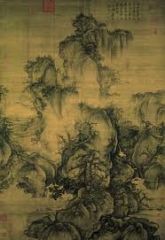
|
Early Spring
Song Ink and color on silk • Negative space is important in Chinese art in order to create mist • Painting is made to enjoy nature. |
|
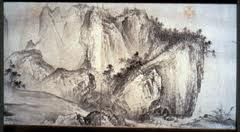
|
Pure and remote view of streams and hills
Song Ink on paper •Mi dots are used to create texture for the trees. • Axe-cut strokes are used to create texture of the mountains and rocks. |
|
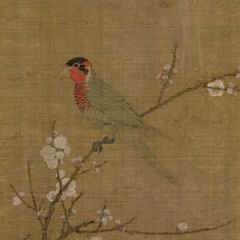
|
5 colored parakeet
Northern Song Ink and color on silk • Emperor Hui-tsung was among the greatest imperial patrons of painting in Chinese history. • This painting is accompanied by a poem written by the emperor himself. |
|
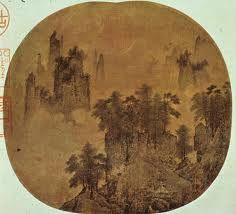
|
Myriad trees on strange peaks.
Northern Song Dynasty Ink and color on silk • National palace museum Taiwan. • Axe Cut strokes. |
|
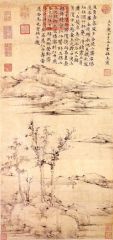
|
Jung-Hsi Studio
Yuan Ink on paper • Produced by Ni Tsan when he was 72. • Dry brush strokes and the side of the brush are utilized here. |
|
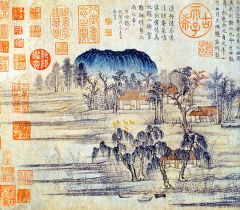
|
Autumn Colors on the Ch’iao and Hua Mountains. Yuan 1280-1368
Ink and color on paper *Autumn *Fishermen |
|
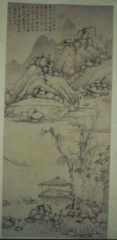
|
Shan shui
15th century Ink on paper • In the style of NI Tsan. • Ni Tsan style utilized dry brushstrokes with the side of the brush. |
|
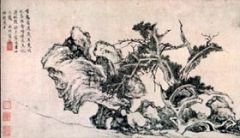
|
Old Cypress and Rock
Ming Ink on paper • Spring • Trees and rock are contorted around each other. |
|

|
The Qingbian Mountain
1617 Ming dynasty Ink on paper, Hanging scroll • A painting of the Ch’ing-pien mountains. • Contains 2 inscriptions, signatures, and 2 seals. |
|
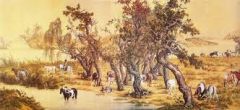
|
A Hundred Horses in a landscape
Qing Dynasty Ink and colors on silk • Created by Italian Guiseppe Castiglione • Castiglione helped to create a hybrid style that combined Western realism with readitional Chinese brushwork. |
|

|
Myna Birds, Old tree and rock
Qing Ink on silk • |
|
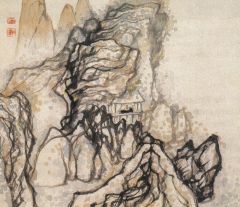
|
Landscape Album for Elder Yu.
Qing Ink and color on paper • Depicts small pavilion or viewing set in a niche of mountainous rock formations. • A solitary figure sits in the niche in contemplation of natural surroundings. |
|
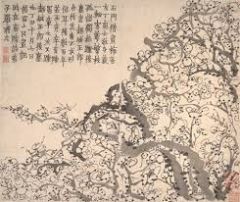
|
Plum Blossoms
Qing Dynasty Ink on paper • Comparison between flowering plum recluse and real life of a professional recluse-artist. • Entire inscription consists of a poem and a post face. |
|
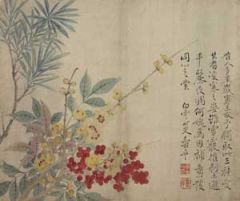
|
Album of flowers: Three friends of winter
Qing Ink, color on paper • Painting done by Yun Shouping who was regarded as one of the 6 masters of the Qing period. • Style mainly consists of flowers and landscapes. |
|

|
Self-Portrait
20th Century Ink on paper • Hanging Scroll • Costume |
|
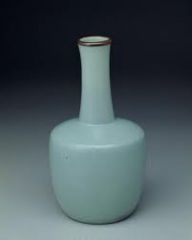
|
Mallet-Shaped vase
Northern Song Porcelain, Ju ware • Ju ware usually has a uniform lavender coat. • A fine thin body is also typical for Ju ware. |
|
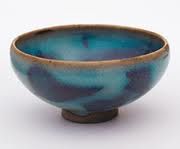
|
Bowl
Northern Song Stoneware with glaze. • Ceramics during the Song Period are among the most influential and revered in the world. • This bowl is a typical example of Jun Ware. |
|
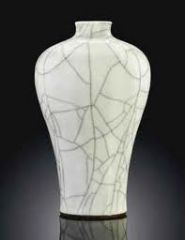
|
Guan Ware Vase
Southern Song Vessel • Guan ware was manufactured at the Southern Song court (1126-1279) to imitate the wares said to have been made at the earlier Northern Song court • However northern song guan wares have yet to be discovered. |
|
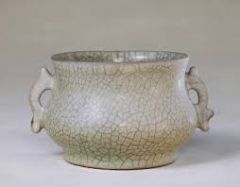
|
Censer
Southern Song period Ceramics • Incense burner • An example of Ge ware. • Usage of the “crazing” technique. |
|
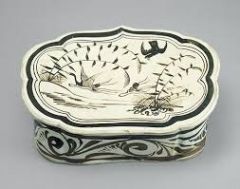
|
Pillow
Late Northern Song to Jin Stoneware with pigment • Painted with brownish black pigment on a background of heavy white slip. • This type of pottery is known as Cizhou ware |
|
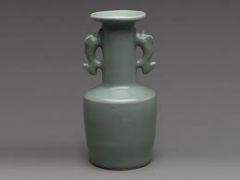
|
Vase
Southern song Porcelaneous stoneware with relief decoration under celadon glaze. • Celadon is one of the first glazes of porcelaneous stonewares that were produced in the Longquan kilns during the southern song dynasty. • Streamlined shape is contrasted by the two crisply molded fish that serve as handles. |
|

|
Pair of vases
Yuan dynasty Porcelain, underglaze cobalt blue • Elephant handles. • “David vases” |
|
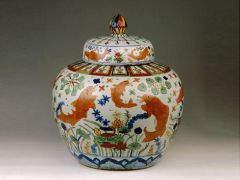
|
Covered jar
Ming Porcelain • Contains imperial characters which say made in Jiajing period of the great Ming. • Underglaze Blue and overglaze enamel colors. |
|
|
Bowl with quail
|
Qing
Ceramic • Depicts 2 quails standing on a rocky landscape. • The paired quails can be read as a rebus for peace and prosperity. |

